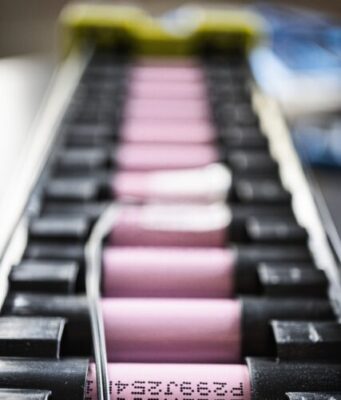Things just got hairy at Princeton.
Researchers found they could coat a liquid elastic on the outside of a disc and spin it to form useful, complex patterns. When spun just right, tiny spindles rise from the material as it cures....
Wheat straw, the dried stalks left over from grain production, is a potential source of biofuels and commodity chemicals. But before straw can be converted to useful products by biorefineries, the polymers that make it up must be broken...
When materials reach extremely small size scales, strange things begin to happen. One of those phenomena is the formation of mesocrystals.
Despite being composed of separate individual crystals, mesocrystals come together to form a larger, fused structure that behaves as...
Hydraulic fracturing, also known as "fracking," relies on water, sand and other chemicals to clear the way for engineers to remove oil or gas from shale—porous rocks below the ground.
Engineers know what they are pumping into the ground, but...
Since element 99 -- einsteinium -- was discovered in 1952 at the Department of Energy's Lawrence Berkeley National Laboratory (Berkeley Lab) from the debris of the first hydrogen bomb, scientists have performed very few experiments with it because it...
On Feb 5th, Seoul National University, College of Engineering (Dean Kookheon Char) announced that Professor Sang Woo Seo's research team (Dr. Jina Yang and Mr. Yong Hee Han) at the School of Chemical and Biological Engineering has developed a...
Carbon dioxide (CO2) is one of the major greenhouse gases causing global warming. If carbon dioxide could be converted into energy, it would be killing two birds with one stone in addressing the environmental issues. A joint research team...
Cyanobacteria produce plastic naturally as a by-product of photosynthesis—and they do it in a sustainable and environmentally friendly way. Researchers at the University of Tübingen have now succeeded for the first time in modifying the bacteria's metabolism to produce...
Rice University engineers have discovered technology that could slash the cost of semiconductor electron sources, key components in devices ranging from night-vision goggles and low-light cameras to electron microscopes and particle accelerators.
In an open-access Nature Communications paper, Rice researchers...
Evidence is emerging that vitamin D—and possibly vitamins K and A—might help combat COVID-19. A new study from the University of Bristol published in the journal of the German Chemical Society Angewandte Chemie has shown how they—and other antiviral drugs—might work....
In the next years, increasing use of electronic devices in consumables and new technologies for the internet of things will increase the amount of electronic scrap. To save resources and minimize waste volumes, an eco-friendlier production and more sustainable...


















